Exclusive Interviews with the Designers Behind the CDW Landmark Installations: Chris Duffy, Duffy London
Clerkenwell Design Week (CDW) stands as a premier highlight in the UK’s commercial design landscape, annually transforming London’s Clerkenwell into a vibrant hub of creativity and innovation. The festival, which attracts designers, architects, and enthusiasts worldwide, features an array of showroom events, exhibitions, and engaging activities.
Central to the festival’s allure are the commissioned installations, strategically placed throughout the event; these installations not only challenge and expand perceptions of design but also act as landmarks which tie the sprawling event together. Crafted to inspire and entertain, these installations transform the streets of Clerkenwell into a dynamic, immersive design journey.
As Clerkenwell Design Week unfolds, Design Insider is thrilled to lead the conversation with exclusive, in-depth interviews with four of the talented designers commissioned to create these landmark installations. Our series begins with a fascinating interview with Chris Duffy, Founder of design studio, Duffy London.
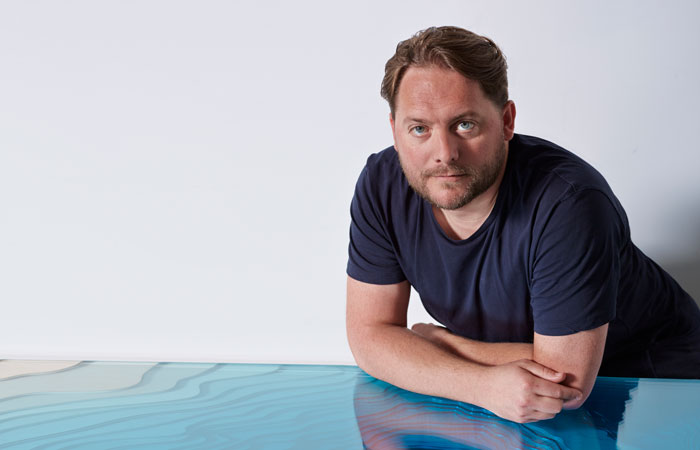
Chris Duffy, Founder of design studio, Duffy London
Could you introduce yourselves and give us an overview of Duffy London and its core design philosophy?
Duffy London is a design studio of 20 years, based in East London. At our core we believe we embody the East London mindset of holding together the practical and the creative.
We create completely original ideas and develop them into pieces that blur the lines between art and furniture. We believe creating furniture that sits in this valley between the two end uses, to look and not touch like art, or to relax and put your coffee on like the table it is, venerates the user and creates beautiful moments around it while being something completely practical and needed.
Duffy London is known for its ideas-based approach that merges art with functionality, often exploring gravity, geography, and optical illusion. Can you elaborate on how these concepts are reflected in your designs?
I believe each Duffy piece comes with an element of transporting the viewer away from their reality, be it through taking them to tropical antipodes with the Abyss, a place where gravity holds is less and tables float with our Balloon series, or just to a reality where the office is fun and playful with the Swing table. We use themes like gravity and geography because they are known to the viewer in such a way that when you push them it shifts everything.
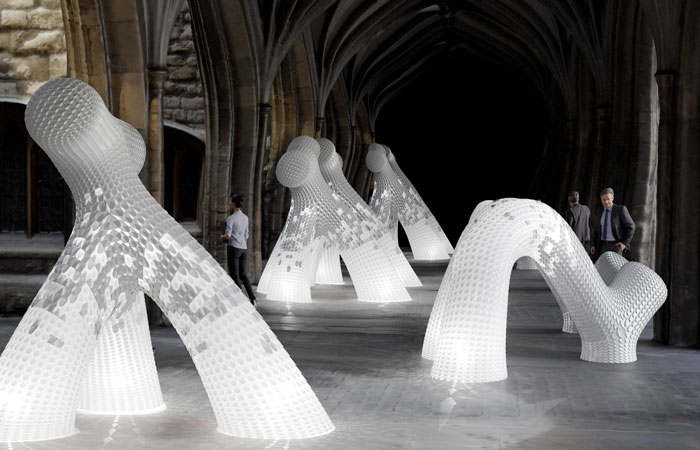
Gatekeepers by Duffy London and Orsi Orban, CDW 2024
This collaboration involves Berlin-based surface designer Orsi Orban. Can you tell us about Orsi’s work and how it aligns with the ethos of Duffy London?
Orsi has a really beautiful and thoughtful craft process that she has developed perfectly, and through working with artisans in creating our own designs, it makes sense that we would continue working closely with craftspeople in our collaborations. The shape shifting patterns of her work also lends itself perfectly to the transformative nature of our pieces, so it was very easy to create something completely unique with Orsi, as we toy with similar concepts.
What made this partnership with Orban particularly exciting or unique for Duffy London?
What made it exciting was that it took us both out of our comfort zones a little and created something unique for our studios. Orsi had worked with us in the past, so we have a close relationship with her as a person and a designer. We knew our sensibilities aligned and so we could take risks in trying new things or avenues we hadn’t properly explored, as there was an established trust.
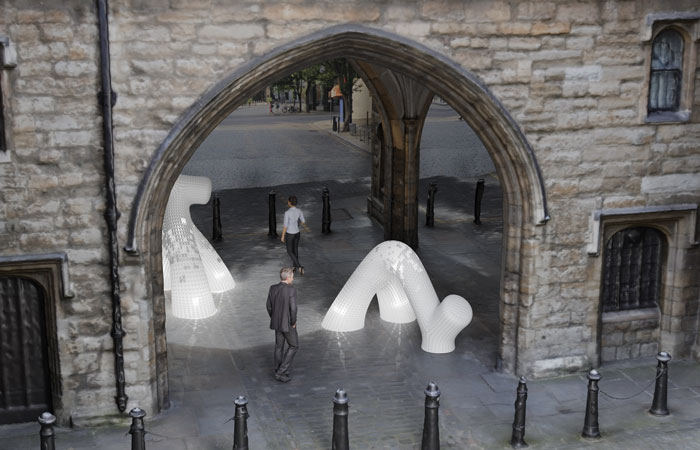
Clerkenwell Design Week is a pivotal event in the design industry. Why do you believe Clerkenwell Design Week is important for designers and design studios, and what value does it bring to your studio specifically?
It’s said that a prophet is treated with honour everywhere except in his own hometown, and as a London designer at London shows it can sometimes feel like that’s the case. But the community aspect of Clerkenwell allows us to meet with our neighbours and community, getting to know the people we create around on an equal level, as it’s a public space. We always look forward to hearing things from the general public’s perspective which sometimes isn’t so readily available face-to-face.
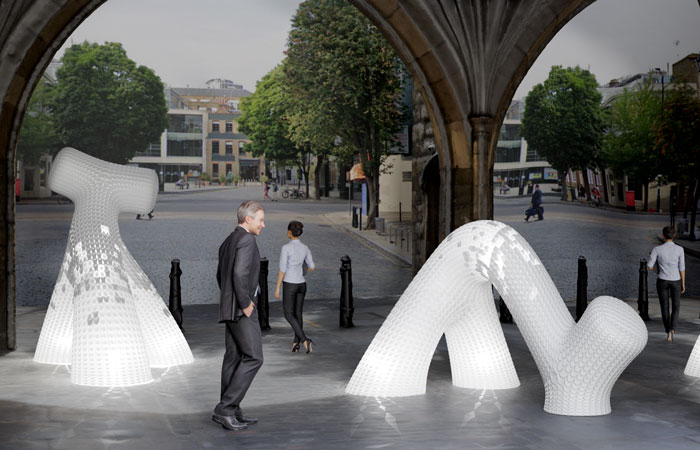
Your latest installation for the festival, Gatekeepers, is set to transform St John’s Gate. Can you introduce us to this installation and the inspiration behind it?
Gatekeepers is inspired by organic structures found in nature, such as bone formations and corals. Starting as a ball of digital clay, these unique designs were virtually manipulated, akin to the creation of early evolutionary biology. Though distinct in their individuality, the sculptures exhibit a harmonious unity, suggesting a shared origin, brought to life by Orsi in collaboration with our studio. In the past year, we have been working with artificial intelligence in design programmes which has been exciting and fascinating. Gatekeepers being a result of this speaks to the relationship between people and AI and the discourse of where it sits in society as we are still figuring that out as a species – does AI walk among us as creatives or as the facilitators to further our own creativity?
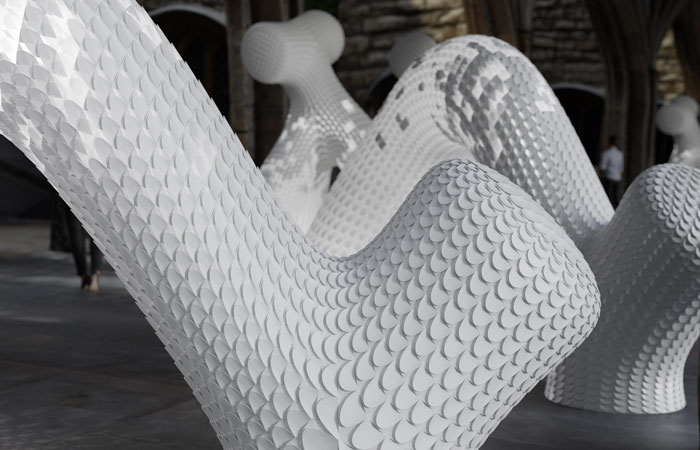
Capturing movement in a static piece is a complex endeavour. How have you incorporated this dynamic sense of life and movement into the Gatekeepers installation?
To us the movement was not something we had to capture as it came to us naturally in designing the piece, and now it surrounds the sculptures in Orsi’s directional surface design. The fur-like pattern created as her design moves over the organic curvature intrinsically gives the installations their movement. By placing them in a transitional space like a gateway and assigning them authority over the space, anthropomorphising the installation in a way leads the viewer to believe they could walk around with them.
Looking forward, what exciting projects or developments can we expect from Duffy London in the near future?
We hope to create more sculpture pieces and art installations like this in the future. As an art-furniture designer, it’s exciting and a little freeing to create pieces that don’t have user purpose. But we also like to maintain the idea that a sculpture is a type of furniture in a way, just not one that you sit on or at, but one that you meet at, and thinking about the spaces we create with the pieces we create is leading us down some exciting avenues




